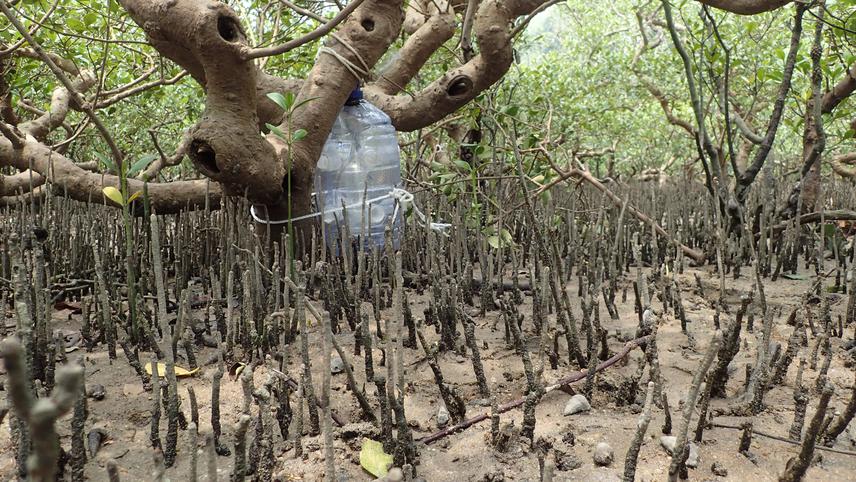Lyle Vorsatz
The study aims to characterise and evaluate the fine scale role microhabitats play in the larval stage of fish and invertebrates that use mangroves as nurseries at their northern and southern distributional limits. This will be achieved through: defining the environmental characteristics of the microhabitats where fish and invertebrate larvae are found. Assessing the spatio-temporal role microhabitats have on larvae that inhabit them and how these larvae have adapted physiologically to these micro-climates. The differences in larval assemblages across microhabitats and localities will also be assessed to allow for habitat prioritisation, clarifying the importance of mangrove root systems and natural phenomena for taxonomic groups which respond to fine scale environmental variation.

A light trap used to sample invertebrate and fish larvae placed in the pencil roots of Avicennia marina at the Ting Kok mangrove forest, Hong Kong. Lyle Vorsatz©
Mangroves are generally regarded as nursery areas for many marine and coastal species. Despite the rarity and critical role mangroves play in coastal and marine environments and its contribution to society, they are considered to be increasingly under threat through natural and anthropogenic disturbances. Given that 44% of the world’s population live within 150 km of a coastline the degradation of mangroves is positively correlated to population density. Human-induced mangrove degradation can be considered to be the most threatening to mangrove ecosystems worldwide.
Microhabitats created by mangrove root systems, burrowing taxa, seagrass beds and tidal creeks all appear to play a critical role in the young life history stages of fish and invertebrates. Subsequent review of the literature surrounding the nursery role that mangrove microhabitats play concerning invertebrate and fish larvae, reveals an evident gap in knowledge on the subject. Mangrove forests which occur at their latitudinal limits are considered to be the least extensive, and an increase in global temperature is thought to affect mangroves at their distributional limits directly. Mangroves at their distributional limits are predicted to expand polewards and encroach adjacent saltmarshes with increasing temperatures. In South Africa, mangrove habitats are relatively pristine, situated in rural areas, however, there is an increasing threat to mangroves in Hong Kong due to urbanisation and overexploitation. The expansion of these mangroves could be halted due to “coastal squeeze”, where mangroves are pushed back into areas that lack the suitable space, which will result in them not being able to establish. In addition, sites in the Indo-Pacific are not building elevation sites as quickly as the rate of sea level rise due to declining sediment delivery, this could result in mangroves being inundated with water and lost if sea-levels continue to rise at present rates. This study has a key focus on highlighting the importance of the microhabitats that mangrove forests provide at their latitudinal limits in the Western Indian Ocean and the Indo-Pacific which could prove to be critical for successful fish and invertebrate larval recruitment and development with increasing temperatures and sea-level rise.